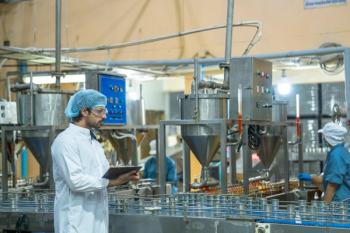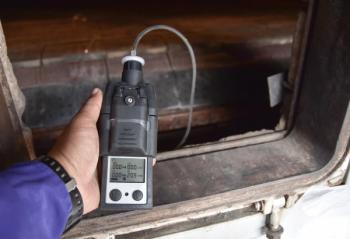
The Remaining Challenges in Using Vibrational Spectroscopy for Food Authentication
Key Takeaways
- Vibrational spectroscopy offers rapid, cost-effective, and eco-friendly solutions for food authentication, capturing unique molecular fingerprints to distinguish authentic from adulterated products.
- Challenges include spectral complexity, fluorescence interference, and limitations of portable spectrometers, complicating the detection of low-level adulterants and calibration transfer.
A review article from researchers at Liaocheng University explores the challenges of applying vibrational spectroscopy techniques to food authentication.
A recent review article published in Applied Sciences highlighted the persistent challenges of vibrational spectroscopy in non-invasive food authentication (1). Written by Wanchong He and Qinghua Zeng, researchers at Liaocheng University (China), this article discusses how spectroscopic techniques, such as mid-infrared (MIR), near-infrared (NIR), and Raman spectroscopy, are changing the way scientists detect fraud, verify origin, and monitor the quality of food products while acknowledging the multiple challenges that remain.
Why are vibrational spectroscopy techniques being used in food analysis?
Vibrational spectroscopy techniques are increasingly recognized for their speed, cost-effectiveness, and environmental friendliness, which is important in food authenticity (2). These optical methods can capture the unique molecular “fingerprints” of foods, enabling researchers to distinguish between authentic and adulterated products (1,2).
He and Zeng’s article suggests advancements in vibrational spectroscopy are helping to improve food authentication efforts. Hyperspectral imaging is one area of growth in this space. Hyperspectral imaging combines spectral and spatial data for more comprehensive chemical visualization (1,2). Other technological advancements include the development of portable and handheld spectrometers, which extend testing capabilities beyond laboratories and into real-world environments such as farms, factories, and markets (1) as well as the integration of artificial intelligence (AI) and chemometrics to interpret complex spectral data (1).
What are the challenges of applying vibrational spectroscopy in food authentication?
Despite recent advancements in technology, vibrational spectroscopy still has a long way to go to meet the current food authentication needs. He and Zeng highlight several important challenges in their study that scientists are currently tackling.
First, there is a challenge with spectral complexity and overlapping signals. Foods are chemically heterogeneous materials, containing compounds such as fats, proteins, and water that generate broad, overlapping spectral bands (1). This makes it difficult to detect low-level adulterants, which is important for identifying fraudulent additives or contaminants. For example, the strong infrared (IR) absorption of water can obscure the subtle signals of minor constituents in high-moisture products like fruits, dairy, and beverages (1).
Another issue is fluorescence interference in Raman spectroscopy. Colored or processed foods often contain pigments and phenolic compounds that produce strong background fluorescence, overwhelming the weak Raman signals (1). Although strategies like surface-enhanced Raman spectroscopy (SERS) and shifted excitation Raman difference spectroscopy can help mitigate this effect, fluorescence remains a critical barrier to consistent detection sensitivity.
Third, the authors highlight that another challenge is the current limitations as to what portable spectrometers can do. These instruments are growing in popularity, but most still exhibit lower resolution and reproducibility than benchtop systems. Additionally, calibration transfer between different instruments or laboratories remains non-trivial, as differences in detector types, optical paths, and configurations lead to spectral inconsistencies (1).
A fourth challenge is sample complexity. Variations in particle size, texture, temperature, and surface morphology can introduce significant scattering effects and baseline shifts that compromise analytical precision (1). Although data preprocessing methods such as multiplicative scatter correction (MSC) and standard normal variate (SNV) are being used to combat this specific challenge, the reality is that as of now, no technique fully compensates for the diversity inherent in real-world food samples (1).
A further challenge lies in chemometric modeling and data fusion. Extracting meaningful information from high-dimensional spectral data requires expertise in multivariate statistics and machine learning. Yet, many published studies rely on relatively simple models lacking external validation with independent data (1).
Finally, the review concludes by discussing how AI has introduced new challenges that need to be ironed out. Deep learning approaches, such as convolutional neural networks (CNNs) and recurrent neural networks (RNNs), can greatly enhance classification accuracy but require large, diverse, and well-annotated datasets to avoid overfitting (1). Moreover, the black-box nature of these models raises questions about interpretability and regulatory acceptance, particularly when applied to food safety and authenticity verification.
Despite these limitations, He and Zeng remain optimistic. They argue that the continued miniaturization of spectroscopic devices, the growth of AI-enhanced spectral interpretation, and advancements in chemometric modeling are steadily overcoming existing barriers (1).
References
- He, W.; Zeng, Q. Non-Invasive Food Authentication Using Vibrational Spectroscopy Techniques for Low-Resolution Food Fingerprinting. Appl. Sci. 2025, 15 (11), 5948. DOI:
10.3390/app15115948 - Cozzolino, D. Low Resolution Food Fingerprinting: Vibrational Spectroscopic Methods for Nondestructive Food Authentication. Curr. Opin. Food Sci. 2024, 60, 101229. DOI:
10.1016/j.cofs.2024.101229
Newsletter
Get essential updates on the latest spectroscopy technologies, regulatory standards, and best practices—subscribe today to Spectroscopy.





